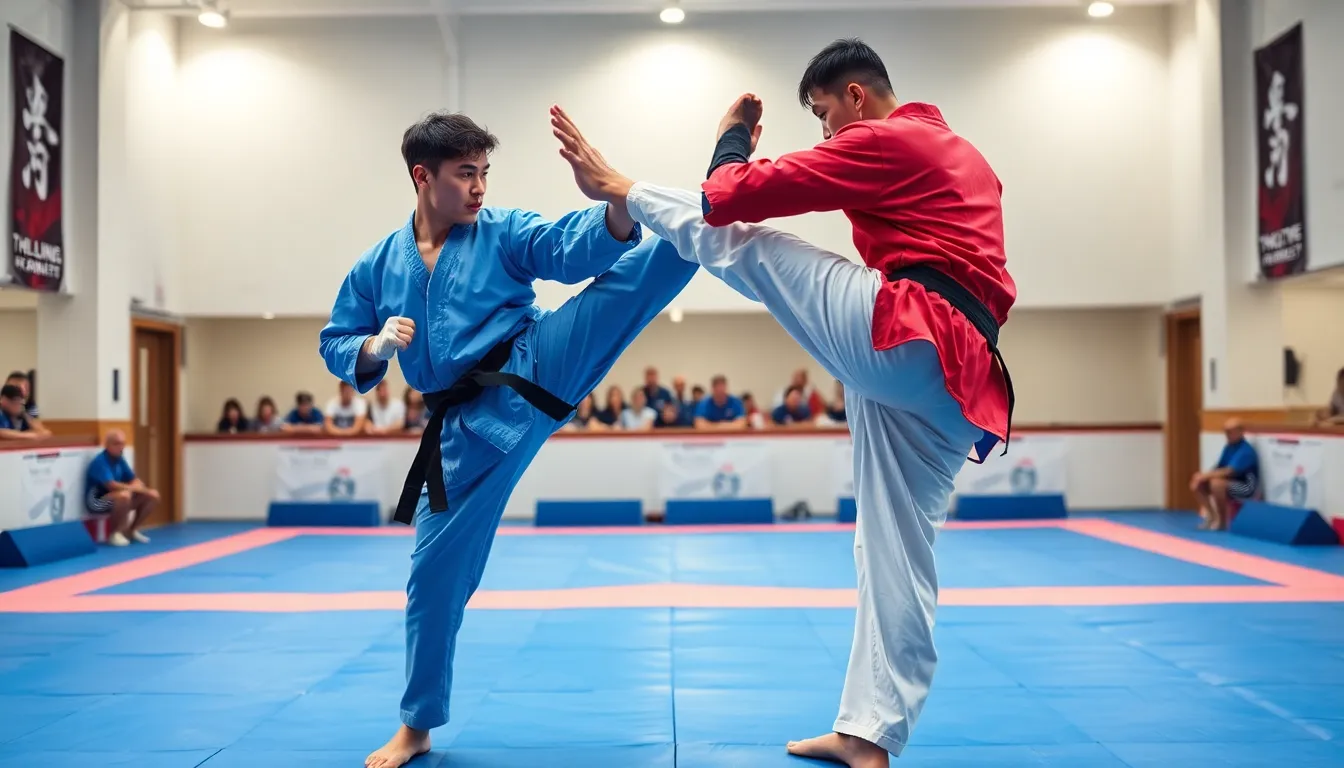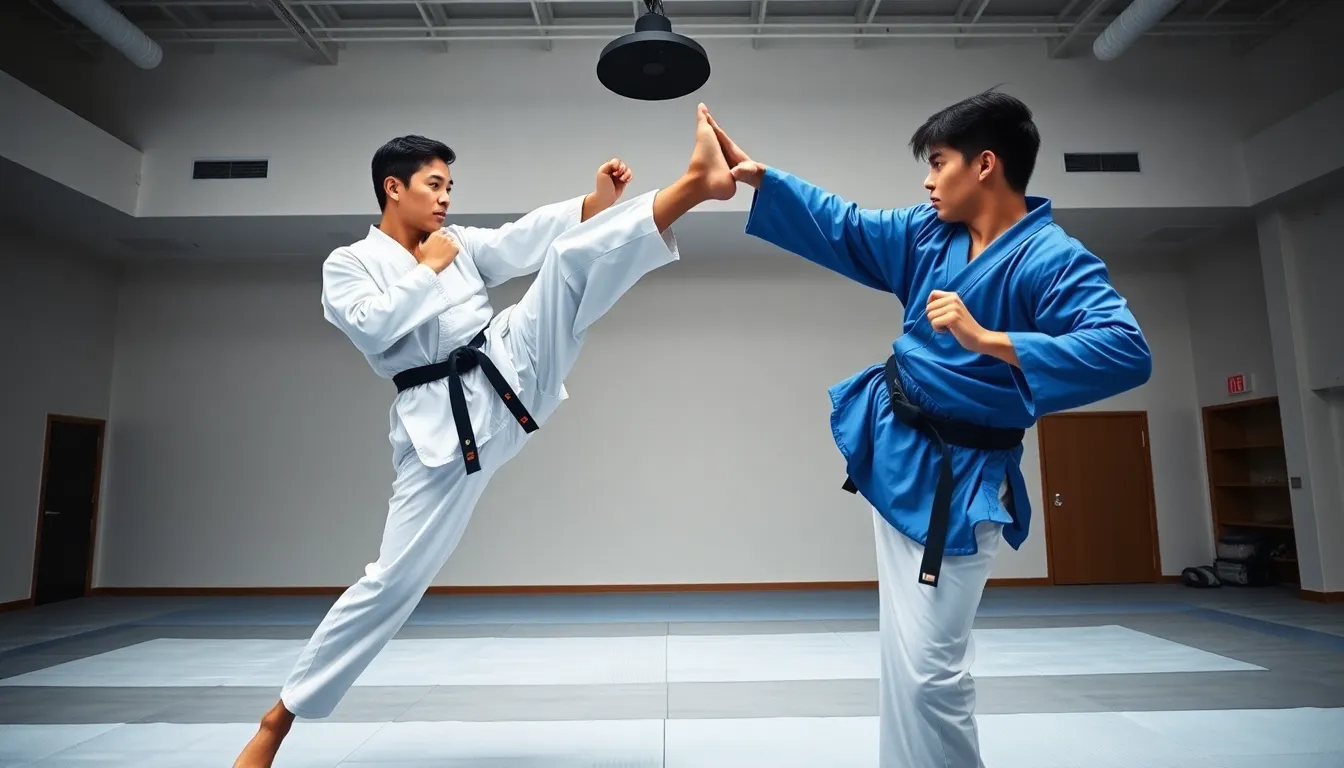Are you ready to kick your knowledge of taekwondo into high gear? Taekwondo bouts can seem like a whirlwind of kicks and punches, but once you understand the fundamentals, they become a thrilling art form. Whether you’re a novice or looking to refine your skills, this guide will cover all you need to dominate in the ring. Grab your dobok, and let’s jump into the world of taekwondo.
Table of Contents
ToggleUnderstanding Taekwondo Bouts

Taekwondo bouts represent not just a test of skill, but also a showcase of discipline and sportsmanship. In a typical bout, two opponents face off, using a combination of foot strikes, punches, and defensive tactics. The goal is to score points by landing effective strikes, while also guarding against your opponent’s attacks.
Each bout is conducted under specific rules that ensure the safety of the fighters and the purity of the competition. The scoring system rewards precision, technique, and strategy. Understanding these rules is crucial for anyone wanting to excel in taekwondo, knowing what counts as a valid hit can mean the difference between victory and defeat.
Also, bouts serve as a reflection of the martial artist’s inner journey. They are an opportunity to test one’s mettle and sportsmanship, making them as much about mental fortitude as physical prowess.
The Importance of Sparring in Taekwondo
Sparring is the lifeblood of taekwondo training. It’s where practitioners refine their techniques and develop their instincts. Without sparring, training can feel somewhat stagnant: it is in the dynamic interaction of sparring that one truly learns to read opponents and react in real-time.
During sparring sessions, students learn how to apply techniques in a live setting. It’s a perfect blend of practice and competition. This controlled environment allows fighters to experiment with strategies, make mistakes, and learn from them, all essential steps for improvement.
Notably, sparring also builds confidence. When they step into a ring, they face not just an opponent but also their own fears and uncertainties. The experience gained in sparring can provide a massive boost to one’s self-esteem, preparing them for the pressures of an actual bout.
Key Techniques for Success in Taekwondo Bouts
Mastering key techniques is essential for success in taekwondo bouts. Here are some vital techniques to consider:
Kicks
The hallmark of taekwondo, kicks like the roundhouse and side kick are crucial. Practitioners should focus on precision and speed to effectively score points. The ability to deliver kicks with both power and accuracy can give a significant advantage during a bout.
Blocks and Parries
Effective defense is as important as offensive techniques. Blocks and parries help in anticipating and neutralizing an opponent’s attack. Training in these defensive maneuvers ensures a fighter can respond fluidly to strikes, maintaining their control in the bout.
Footwork
Light, agile footwork allows fighters to dodge and weave, creating openings for their own counters. A well-timed sidestep or pivot can mean the difference between being hit and landing a clean shot. Practicing this footwork is essential to move seamlessly around the ring.
Combinations
Practicing combinations of strikes can catch opponents off guard. A well-rehearsed series of kicks and punches can maintain the pressure and force the opponent into a defensive position. Keep your combinations varied to keep your opponent guessing.
Strategies for Competing in Taekwondo Tournaments
When it comes to competing in tournaments, strategy plays a crucial role. Here are some smart strategies fighters can employ:
Know Your Opponent
Researching opponents can pay off significantly. Understanding their strengths and weaknesses allows for tailored strategies during the bout. Having a game plan can set the stage for success.
Maintain Composure
Keeping calm under pressure is vital. Fighters should practice mindfulness techniques to stay focused, avoid panic, and maintain clear judgment during the bout. A composed fighter is more likely to make better decisions.
Adaptability
While it’s beneficial to have a strategy, adaptability is equally important. If a plan isn’t working, the ability to pivot and change tactics mid-fight can catch the opponent off guard. Being fluid and receptive to the flow of the match is often the key to victory.
The Latest Trends in Taekwondo Bouts and Sparring
As the sport evolves, so do the norms surrounding taekwondo bouts. Some of the latest trends to keep an eye on include:
Technology Integration
Many taekwondo practitioners are now utilizing technology for training. Wearable devices and apps can help track performance metrics like speed and accuracy, offering insights that can be leveraged for improvement.
Increased Focus on Mental Training
Mental conditioning programs are becoming more popular in taekwondo. Athletes are recognizing the importance of mental strength and resilience, and they are incorporating visualization techniques and meditation into their routines.
Enhanced Sparring Techniques
Coaches are adapting sparring techniques to mirror real-life scenarios more closely. This means that fighters are not only preparing for traditional bouts but developing skills to face unorthodox fighting styles as well.
Preparing for Your First Taekwondo Bout
Preparing for that first bout can be both exhilarating and nerve-wracking. Here’s how fighters can gear up:
Physical Training
A proper training regimen is essential for building strength, stamina, and flexibility. Regular practice that focuses on kicking, punching, and defensive moves will lay down a solid foundation.
Mental Preparation
Visualization can work wonders. Envisioning oneself successfully executing techniques and winning can boost confidence and reduce anxiety. Fighters should take time to mentally prepare themselves for the bout ahead.
Mock Bouts
Participating in mock bouts can simulate the experience of a real competition. This allows for not only physical preparation but also helps acclimatize to the competitive environment.






